


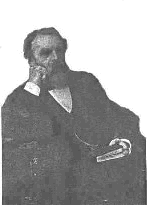
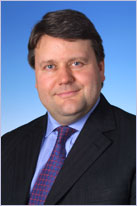
Notable Relatives
Scotland
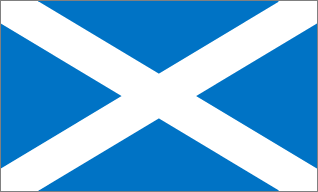
"From this small hill by the Glazert Burn
They bequeathed a Soul unto our Name
From Hist'ries Heart we may discern
Who We are and from Whence we came
Whose Bearer's deeds did Greatness earn
For Dunlop, Dunlap, DeLap Same"
MJD from "The Black'n'Blue" 2002
updated 12.26.06
Scotland/Ireland/USA/Australia/Canada/India/Caribbean/France/China

Dominus Gulliemus ( William) de Dunlop,
1260 DOM. GULLIEMUS de DUNLOP, who appears in a notarial copy of an
inquest, in the Charter Chest in the borough of Irvine, in 1260, in a cause
betwixt the burgh and Dom. Godfredus de Ross. Dom William Gulliemus de Dunlop
was of equal rank with close by Barons of the Realm, including Dom de Balliol,
Dom de Fleming, Dom de Crawford and Dom de Gray. Dominus was used to designate a
Lord, Baron, or Peer of the Realm. He was the first recorded holder of the
surname.
-Bessie Dunlop of Lyne . On November
8th 1576 she was arraigned at the bar of the High Court of Judiciary in Edinburgh, accused of
sorcery, witchcraft and incantation, dealing with charms, and abusing the people
with devilish craft of sorcery. She was found guilty and sentenced to be burned
at the stake! Bessie was then burned at Castle Hill at the Witches Well for
being a member of a coven of eight women and four men, and for receiving herbs
from the Queen of the Faeries. (Source: Robbins, Encyclopedia, 455).
arraigned at the bar of the High Court of Judiciary in Edinburgh, accused of
sorcery, witchcraft and incantation, dealing with charms, and abusing the people
with devilish craft of sorcery. She was found guilty and sentenced to be burned
at the stake! Bessie was then burned at Castle Hill at the Witches Well for
being a member of a coven of eight women and four men, and for receiving herbs
from the Queen of the Faeries. (Source: Robbins, Encyclopedia, 455).
Highlander :Witchcraft
Trials
Accused Witches
Bessie Dunlop, White Witch of Dalry
-Alexander Dunlop,
Minister of Paisley Abbey from 1644-1677. He was the second son of James Dunlop,
13th of that Ilk, and elder brother of John Dunlop of Gankirk. He married
Elizabeth Mure, granddaughter of Hans Hamilton, minister of Dunlop.
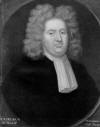 -William Dunlop Scottish educator,
son of the above Alexander, born
in Scotland about 1650; died there in March 1700. He was educated at Glasgow
University and was licensed as a minister, but took part in the insurrection of
1679, and subsequently joined the emigrants who colonized Carolina. Here he
continued preaching at intervals till 1690, when he returned to Scotland, and
was appointed by King William principal of Glasgow University, where he remained
until his death, supporting its interests with dignity and zeal.
-William Dunlop Scottish educator,
son of the above Alexander, born
in Scotland about 1650; died there in March 1700. He was educated at Glasgow
University and was licensed as a minister, but took part in the insurrection of
1679, and subsequently joined the emigrants who colonized Carolina. Here he
continued preaching at intervals till 1690, when he returned to Scotland, and
was appointed by King William principal of Glasgow University, where he remained
until his death, supporting its interests with dignity and zeal.
-Alexander Dunlop, son of the above
William, born in Carolina in 1684; died in Scotland in 1742, became professor of
Greek in Glasgow University, and afterward published a grammar of that language
(1736) that was long held in esteem.
The Lord Provost of
Glasgow is the convener of the City of Glasgow council. They are elected
by the city councillors and serve not only as the chair of that body, but as a
figurehead for the entire city. They are equivalent in many ways to the
institution of mayor that exists in many other countries. Each of the 32
Scottish local authorities elects a provost, but it is only in the four main
cities, Glasgow, Edinburgh, Aberdeen and Dundee that have a Lord Provost, who
also serves as the Lord Lieutenant for the city. This is enshrined in the
Local Government (Scotland) Act, 1994. Glasgow has had a Lord
provost since 1450! Four Dunlops stood office as Lord
Provost Of Glasgow: Colin Dunlop 1770-1772; his son John Dunlop 1794-1796; Henry
Dunlop 1837-1840; and Sir Thomas Dunlop 1914-1917.
 -Colin
Dunlop, who with his brother Robert, sons of
James Dunlop of Gankirk, were principal owners of the Glasgow based Ship Bank,
established in 1749. The Ship Bank was the first of the Scottish Provincial
banks formed in Glasgow.
-Colin
Dunlop, who with his brother Robert, sons of
James Dunlop of Gankirk, were principal owners of the Glasgow based Ship Bank,
established in 1749. The Ship Bank was the first of the Scottish Provincial
banks formed in Glasgow.
John Colin Dunlop (circa 1785 - 1842),
historian, son of John Dunlop and grandson of Colin Dunlop, Lords Provost of
Glasgow, Scotland, where and at Edinburgh he was educated, was elected to the
Faculty of Advocates in 1807, and became Sheriff of Renfrewshire. He wrote a
History of Fiction (1814), a History of Roman Literature to the Augustan
Age (1823-28), and Memoirs of Spain during the Reigns of Philip IV. and
Charles II. (1834). He also made translations from the Latin Anthology.
Henry Dunlop 1799-1867
The third son of a Renfrewshire cotton trader, Dunlop was
born in Linwood on 7 June 1799. After education at Glasgow High School and
Glasgow University, he entered the family business of James Dunlop & Sons.
He was better known for his political activities, having
entered the town council in 1833. In 1837 he contested a bitterly disputed
election for the provostship, only succeeding to the post after a judgment in
the House of Lords in 1838. An interest in ecclesiastical matters led to his
move, in the Disruption of 1843, from the Church of Scotland to the Free Church.
He was chairman of Glasgow Chamber of Commerce in 1841, 1850 and 1862, and in
1848 was appointed Deputy-Lieutenant of Lanarkshire.
Twice married, to Ann Carnie and Alexina Rankin, he fathered seven sons and
three daughters and died in Edinburgh on 10 May 1867
 -John Dunlop (1 Dec 1755- 4 sept 1820)
A merchant councillor, a popular member of the "Hodge-Podge Club", and a poet of
no mean order , John was the son of the above Colin Dunlop of Carmyle. John was
elected Bailee (1785-88), Lord Dean of Guild(1792-93), and Lord Provost of
Glasgow (1794-95) and afterwards became the Collector of Customs at Port
Glasgow. He also was Director of Stirling's Library. John authored two
well-known songs: "here's to the year that's awa," and "Dinna ask me gin I lo'e
ye," besides other pieces of considerable merit. John was,after the leaving of
Dr Moore, regarded the Poet Laurate of the club...and after the start of the
American Revolution went bankrupt, being the owner of a tobacco house: J.Dunlop&Co.
He published in 1817 and 1818, a collection of his original poems in two volumes
(printed by Donaldson and Macfarlan,Greenock). Sir Walter Scott, a good friend,
was given a copy of these rare books. John was very well regarded in Glasgow,
moving amongst the highest society. John is interred in the High Church of
Glasgow burying Ground. John resided at
Rosebank in Glasgow.
-John Dunlop (1 Dec 1755- 4 sept 1820)
A merchant councillor, a popular member of the "Hodge-Podge Club", and a poet of
no mean order , John was the son of the above Colin Dunlop of Carmyle. John was
elected Bailee (1785-88), Lord Dean of Guild(1792-93), and Lord Provost of
Glasgow (1794-95) and afterwards became the Collector of Customs at Port
Glasgow. He also was Director of Stirling's Library. John authored two
well-known songs: "here's to the year that's awa," and "Dinna ask me gin I lo'e
ye," besides other pieces of considerable merit. John was,after the leaving of
Dr Moore, regarded the Poet Laurate of the club...and after the start of the
American Revolution went bankrupt, being the owner of a tobacco house: J.Dunlop&Co.
He published in 1817 and 1818, a collection of his original poems in two volumes
(printed by Donaldson and Macfarlan,Greenock). Sir Walter Scott, a good friend,
was given a copy of these rare books. John was very well regarded in Glasgow,
moving amongst the highest society. John is interred in the High Church of
Glasgow burying Ground. John resided at
Rosebank in Glasgow.

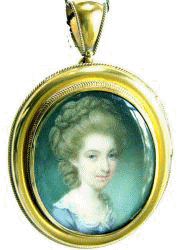 Frances Wallace Dunlop of Dunlop House was
a frequent correspondent of Robert Burns, more than any other. His last writing
was to her 4 days before his death, and the last thing he read was her answer.
Robert Burns and Mrs. Dunlop -John
and Frances Wallace Dunlop had seven sons and six daughters. Francis, the
first son (8.7.1749) died in infancy. Thomas, born 18th September 1750,
assumed the name of Wallace and the baronetcy of Craigie. Alexander, the
third of the sons, died young. Andrew, the fourth, succeeded to the
Estate of Dunlop (20th of that Ilk), served in the American War, raised the
Ayrshire Fencible Calvary, and received the rank of Brigadier General then died
unmarried in 1804 in Antigua. James, the fifth son, (21rst of that Ilk) see
below. John, the sixth son, was in the Army, and retired to manage a farm at Morham Mains (Muir) with his wife/cousin Frances Magdalene Dunlop. Anthony, the
seventh son, served as an officer in the Royal Navy or merchant marine, married
Ann Cunningham, and purchased a farm he named Ellerslie on the Isle of Man,
where he committed suicide in 1828.
Frances Wallace Dunlop of Dunlop House was
a frequent correspondent of Robert Burns, more than any other. His last writing
was to her 4 days before his death, and the last thing he read was her answer.
Robert Burns and Mrs. Dunlop -John
and Frances Wallace Dunlop had seven sons and six daughters. Francis, the
first son (8.7.1749) died in infancy. Thomas, born 18th September 1750,
assumed the name of Wallace and the baronetcy of Craigie. Alexander, the
third of the sons, died young. Andrew, the fourth, succeeded to the
Estate of Dunlop (20th of that Ilk), served in the American War, raised the
Ayrshire Fencible Calvary, and received the rank of Brigadier General then died
unmarried in 1804 in Antigua. James, the fifth son, (21rst of that Ilk) see
below. John, the sixth son, was in the Army, and retired to manage a farm at Morham Mains (Muir) with his wife/cousin Frances Magdalene Dunlop. Anthony, the
seventh son, served as an officer in the Royal Navy or merchant marine, married
Ann Cunningham, and purchased a farm he named Ellerslie on the Isle of Man,
where he committed suicide in 1828.
-Sir James Dunlop of Dunlop,
fifth son
of Frances Wallace, he succeeded in 1804 to the Estate of Dunlop. He served in
the American war, where he attained the rank of Major. He commanded an
assaulting column at the siege of Seringapatam, India. Returning to Britain, he
attained the rank of Major General under Wellington (Fifth Division) during the
Peninsular War of 1808-1814. In 1815 he was elected a member for the Stewartry
of Kirkcudbright. His son, John Dunlop was MP for Ayr and was created a baronet
in 1838.

Sir Walter Scott is a Dunlop through his great-great
grandmother. James Dunlop (1574b)married Jean Sommerville. Their son John
married Bessie Dunlop, founder of Gankirk branch of family....whose daughter
Jean Dunlop married Robert Campbell...whose daughter Janet Campbell married Tom
Haliburton...whose daughter Barbara Haliburton married Robert Scott....Their son
Walter Scott married Ann Rutherford, whose son was Sir Walter Scott (1771-1832).
(Scott wore his mother's tartan, the Douglas-Hume. His uncle was Dr. Daniel
Rutherford, the discoverer of Nitrogen and his maternal grandfather was Dr. John
Rutherford, the father of modern surgery....submitted by Gary Harding)
-Robert Henry Wallace Dunlop A
great-grandson of Frances Wallace, Robert (b1823) is a direct(15th) descendant
of King James II. Robert, in the footsteps of his father, John Andrew Wallace
Dunlop, served in the Bombay Civil Service and was a member of Council at
Bombay, India. In his lineage is also is William Wallace, The Red Comyn, Edward
I of England, Robert the Bruce, David I of Scotland, William the Conqueror,
Egbert the Saxon, and Emperor of the West, Charlemagne! The source for these
fascinating Claims? Burkes Royal Lineage.
- James Dunlop of Dunlop died in 1858,
being the last Dunlop owner of the Dunlop House. Being unmarried and childless,
the estate was sold to the Mayor of Dunlop. James was the last official holder
of the original Family Arms, according to the Lyon Court. Today's Chief is to
try and claim this line's Arms.
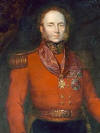
-John Alexander (Sandy)
Agnew Dunlop-Wallace 7th Bart. of Craigie(1775-10 February 1857). Grandson of
Frances Wallace Dunlop and Eldest son of Lieutenant Colonel Sir Thomas
Wallace, 6th Baronet, he served as aide-de-camp to
Lt-Colonel Maxwell, his uncle, who had a command under Cornwallis in the
campaigns against Tippoo Sultaun of Mysore. He also served under Sir Ralph
Abercrombie in Egypt, and commanded the 88th Regiment, the Connaught Rangers, in
the Peninsular War. He was made a K.C.B. and rose to the rank of General in
1851. He Had five sons and one daughter with Janet Rodger of Glasgow. Styled as
Alexander Wallace. Ensign 75th Foot 1787, Lieutenant 60th Foot 1790,
Lieutenant 75th Foot 1791, Captain 58th Foot 1796, Major 58th Foot 1803,
Lieutenant Colonel 11th Reserve Battalion* 1804, Lieutenant Colonel 88th Foot
1805. Brevet Colonel 1813, Major General 1819, Lieutenant General 1837,
General 1851. *renamed 11th Garrison Battalion 1804 and disbanded 1805. Early
Service: India 1789-1796 and Aide-de-Camp at Seringapatam 1792, Minorca 1798,
Egypt 1801. Peninsular War: with his regiment 1809 and took temporary command
of the 3rd Division in April 1812 and brigades in the 3rd Division July -
October 1811, ?January - February 1812?, June - October 1812. Other Service:
Appointed to temporary command of 14th Brigade France August 1815.
CB 1815. KCB 1833. Succeeded as 7th Baronet
1835. Colonel of 88th 1831-1857.
 Colin
Dunlop Donald This fine specimen of a Glasgow Writer
of the old school was born in March, 1777, in a house on the west side of the
Stockwellgate, which had previously been the town house of the Stuarts of
Castlemilk. His father, Thomas Donald of Geilston, was a Virginia Merchant or
Tobacco Lord; and his mother was Janet, daughter of
Provost Colin Dunlop, of Carmyle, from whom he got his name. Like all
Glasgow boys of that day, he was sent to the Grammar School, and entered Mr.
John Dow's class of 1784-85. He early showed the stuff that was in him, being
dux of his class in 1785, 1786, and 1788. In 1787 he was beaten by a young Nova
Scotian, Thomas Wallace, much, no doubt, to his own disgust, for he was of a
masterful temper. For some reason or another he received his legal training in
Edinburgh, chiefly in the office of James Dundas, Clerk to the Signet, founder
of the great firm of Dundas & Wilson. In 1811 Mr. Donald married Marianne
Stirling, youngest daughter of John Stirling of Tullichewan, and head of the
firm of William Stirling & Sons, of Cordale and Dalquhurn. He long survived his
wife, by whom he had a large family, and died on 18th September, 1859.
Colin
Dunlop Donald This fine specimen of a Glasgow Writer
of the old school was born in March, 1777, in a house on the west side of the
Stockwellgate, which had previously been the town house of the Stuarts of
Castlemilk. His father, Thomas Donald of Geilston, was a Virginia Merchant or
Tobacco Lord; and his mother was Janet, daughter of
Provost Colin Dunlop, of Carmyle, from whom he got his name. Like all
Glasgow boys of that day, he was sent to the Grammar School, and entered Mr.
John Dow's class of 1784-85. He early showed the stuff that was in him, being
dux of his class in 1785, 1786, and 1788. In 1787 he was beaten by a young Nova
Scotian, Thomas Wallace, much, no doubt, to his own disgust, for he was of a
masterful temper. For some reason or another he received his legal training in
Edinburgh, chiefly in the office of James Dundas, Clerk to the Signet, founder
of the great firm of Dundas & Wilson. In 1811 Mr. Donald married Marianne
Stirling, youngest daughter of John Stirling of Tullichewan, and head of the
firm of William Stirling & Sons, of Cordale and Dalquhurn. He long survived his
wife, by whom he had a large family, and died on 18th September, 1859.
-Robert John Wallace Dunlop, Captain of the packet Brig "HMS Star"(6
guns), 2nd Division West African Station, which he commanded off Sierra Leone
and Gallinas in 1838-45...In these actions he seized the following ships: On
Feb. 3, 1844 , the Nova Christina, freeing 70 slaves. On 1 Apr 1844 the
schooner Maria. On 30 Aug 1844, a brigantine; on 30 Jan 1845 the Cazuza; on 8
Feb 1845 the schooner Diligencia; on 11 Feb 1845 the Vivo; on 6 Mar 1845 the
Virginia; on 26 Mar 1845 the schooner Audaz; on 27 Mar 1845 the Rafael; 17 Apr
1845 the Schooner Minerva; 28 Jun 1845 the schooner Mariquinha; 16 Jul 1845 the
Brig Fantasma; in the next four days three more brigs with unknown names; on Dec
24 1845 another Brig; and on 17 Feb 1846 the Brig Paquete de Rio. These Brigs
held over 500 slaves each. Captain Dunlopís actions freed over 5,000 slaves on
their way to the West Indies!
Robert John Wallace Dunlop was son of Robert Wallace Dunlop,(b 1774), son
of Robert Dunlop of Rotterdam and Magdalene Dunlop, daughter of Francis Dunlop,
18th of that Ilk and Magdalene Kinloch.
- Thomas Dunlop Shipowner, Businessman.
In 1851, at the age of twenty,
 Thomas commenced business on his own account as a provision merchant at 231
Cowcaddens Road, Glasgow. The business seems to have done well, and within a few
years he had progressed to being a grain merchant, and was operating from larger
premises at 249 Argyle Street. That business grew too, and he began importing
flour as well as buying and selling grain in the domestic market. That led, in
1868, to the acquisition in partnership with a friend, of his first ship, the
wooden baroque Wye, of 334 tons. The partners initially lost money on the Wye,
but gained valuable experience and, by the time she was sold in 1872, they had
three other baroques, and Thomas was firmly established as a ship owner and
manager. His sailing ships became the Clan Line of sailing ships; the first
vessel to be launched with the Clan name
Thomas commenced business on his own account as a provision merchant at 231
Cowcaddens Road, Glasgow. The business seems to have done well, and within a few
years he had progressed to being a grain merchant, and was operating from larger
premises at 249 Argyle Street. That business grew too, and he began importing
flour as well as buying and selling grain in the domestic market. That led, in
1868, to the acquisition in partnership with a friend, of his first ship, the
wooden baroque Wye, of 334 tons. The partners initially lost money on the Wye,
but gained valuable experience and, by the time she was sold in 1872, they had
three other baroques, and Thomas was firmly established as a ship owner and
manager. His sailing ships became the Clan Line of sailing ships; the first
vessel to be launched with the Clan name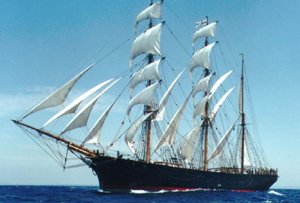 being the Clan Macleod, in 1874.
That vessel is today (September 2001) owned by the Sydney Heritage Fleet of
Australia, and is still sailing in great majesty, but as the James Craig, the
name given her in 1905 after being sold to J.J. Craig of New Zealand in 1900 and
entering the
being the Clan Macleod, in 1874.
That vessel is today (September 2001) owned by the Sydney Heritage Fleet of
Australia, and is still sailing in great majesty, but as the James Craig, the
name given her in 1905 after being sold to J.J. Craig of New Zealand in 1900 and
entering the
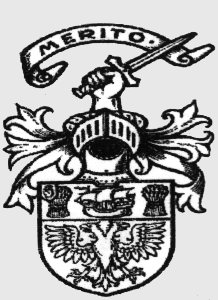 trans-Tasman trade in 1901. His son Sir Thomas Dunlop of Glasgow was created a
baronet in 1916. He was Lord Provost and Lord Lieutenant of Glasgow from
1914-1917, and was decorated by several countries. His grandson, Sir Thomas
(1881-1957)(2nd Bt) and GGrandson Sir Thomas (1912-1990)(3rd Bt) carried on in
the shipbuilding business until the early 1980's, according to the company's
centenary publication. (submitted by Geoffrey Winter). Sir Thomas Dunlop (4th
Bt) still lives near Glasgow today, and holds these Arms.
trans-Tasman trade in 1901. His son Sir Thomas Dunlop of Glasgow was created a
baronet in 1916. He was Lord Provost and Lord Lieutenant of Glasgow from
1914-1917, and was decorated by several countries. His grandson, Sir Thomas
(1881-1957)(2nd Bt) and GGrandson Sir Thomas (1912-1990)(3rd Bt) carried on in
the shipbuilding business until the early 1980's, according to the company's
centenary publication. (submitted by Geoffrey Winter). Sir Thomas Dunlop (4th
Bt) still lives near Glasgow today, and holds these Arms. House
Flag of the Dunlop line
House
Flag of the Dunlop line
BAILIE DUNLOP
is the elder son of the late Thomas Dunlop, grain merchant and
shipowner, Glasgow, and was born in the city in 1855. He was educated at Glasgow
Academy, and for a time before going into business, filled in his leisure
by attendance at the old Andersonian College. He first served an
apprenticeship in the office of Messrs. Gillespie, Cathcart,
& Fraser, one of the largest foreign merchant firms of Glasgow of the time, then
he passed into his father's business. The first business of the firm of Thomas
Dunlop & Sons was that of grain merchants, but the firm carried on in addition,
that of ship owners and marine insurance brokers and Lloyd's
agents. Their fleet is the Queen Line of steamers and the Clan Line of sailing
ships. Bailie Dunlop and his younger brother were the heads of the firm.
He was Consul for the Republic of Paraguay, while his brother held the same
office for that of Haiti.He was Vice-Commodore of the Royal Gourock Yacht Club,
and was on the Committees of the Royal Clyde and Royal Northern Clubs, besides
being a member of the Clyde Corinthian Club and the Holy Loch Club. In addition
to these, and apart from yachting, he was a member of the Conservative
Club, the New Club, the United Anglers' Club, and the Paisley Club.He
was a Director of the Royal Glasgow Institute of the Fine arts, and was
Vice-President of Glasgow Art Club for the two years ending in
1908. He possessed a representative collection of pictures of the Glasgow
school.In 1879 he married Miss Mitchell, and had a family of three sons and
three daughters.
-Marion (Marianne) Wallace Dunlop. Scottish woman
who was the first to go on a hunger strike for women's voting rights. She did so
in a London prison in 1909. Aunt of the 29th of that ilk, Keith Stuart Wallace
Dunlop.
Hunger Strikes
Suffragettes
On 22 June
[1909], Marion Wallace Dunlop, a sculptress, attempted to print an extract from
the Bill of Rights* on the wall of St Stephen's Hall of the House of Commons.
Ejected without being arrested, she returned on 24 June and used indelible ink
to stamp the quotation on the wall. This time she was arrested. * The quote which she wrote ran:
'It is
the right of the subjects to petition the King, and all committments and
prosecutions for such petitioning are illegal'
On 2
July [1909], Marion Wallace Dunlop was sentenced to one month in prison for
defacing the wall of St Stephen's Hall on 24 June. She asked to be treated as
a political prisoner, and placed in the First Division. Her request was
denied. Three days later, without the foreknowledge of the Union's leaders,
she began a hunger strike. After refusing all food for ninety-one hours, she
was released from prison.
taken from the book by Andrew Rosen:
Rise Up, Women!
-Sir Ernest Dunlop Swinton (1868-1951)
Inventor of the Tank. Biographical history: Born 1868; educated at University
College School, Rugby School, Cheltenham, Blackheath Proprietary School and the
Royal Military Academy, Woolwich; commissioned into the Corps of Royal
Engineers, 1888; served in India, 1889-1894; Lt, 1891; Assistant Instructor in
Fortification, School of Military Engineering, Chatham, Kent, 1896-1899; Capt,
1899; served in Second Boer War, South Africa, as Adjutant and later, Commanding
Officer, 1 Bn, Railway Pioneer Regt, 1899-1902; awarded DSO, 1900; Staff Capt,
Army Headquarters, War Office, 1905-1907; Maj, 1906; Chief Instructor in
Fortification and geometrical drawing, Royal Military Academy, Woolwich,
1907-1910; Secretary, Historical Section, Committee of Imperial Defence,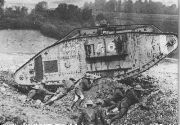 employed on the British Official History of the Russo-Japanese War, 1910-1913;
awarded the Chesney Gold Medal, 1913; served in World War One, 1914-1918; Deputy
Director of Railway Transport, 1914; Assistant Secretary (Military), Committee
of Imperial Defense and War Cabinet, 1914-1917; Lt Col, 1915; originator of
tanks, 1915-1916; temporary Col, 1915-1917; raised Heavy Section, Machine Gun
Corps, 1916; Brevet Col, 1917; awarded CB, 1917; lecture tour of USA, 1918;
retired 1919; Honorary Maj Gen, 1919; Controller of Information Department of
Civil Aviation, Air Ministry, 1919-1921; Director, Citroen Company, 1922-1951;
created KBE, 1923; Chichele Professor of Military History, Oxford University,
1925-1939; Col Commandant Royal Tank Corps, 1934-1938; died 1951.
employed on the British Official History of the Russo-Japanese War, 1910-1913;
awarded the Chesney Gold Medal, 1913; served in World War One, 1914-1918; Deputy
Director of Railway Transport, 1914; Assistant Secretary (Military), Committee
of Imperial Defense and War Cabinet, 1914-1917; Lt Col, 1915; originator of
tanks, 1915-1916; temporary Col, 1915-1917; raised Heavy Section, Machine Gun
Corps, 1916; Brevet Col, 1917; awarded CB, 1917; lecture tour of USA, 1918;
retired 1919; Honorary Maj Gen, 1919; Controller of Information Department of
Civil Aviation, Air Ministry, 1919-1921; Director, Citroen Company, 1922-1951;
created KBE, 1923; Chichele Professor of Military History, Oxford University,
1925-1939; Col Commandant Royal Tank Corps, 1934-1938; died 1951.
The First Tank
History of the Tank
-the immediate past Scottish Duke of
Argyll(12th), Ian Campbell, was a descendant of the Dunlaps.....But his
claim is that the Dunlaps were a Highland clan who swore allegiance to a Rob Roy
Campbell, and accordingly changed their name to Campbell. (The statement goes on
to say that the Dunlops were prominent lowlanders of Ayrshire, and completely
separate.) It is this Dunlap/Campbell bloodline which currently holds the
Chieftainship of the Campbell Clan!
 Baron Thomas Galloway Dunlop du Roy de
Blicquy Galbraith, descended from
great-grandparents William Brodie Galbraith and Annie Jack Dunlop, daughter of
Thomas Dunlop and Robina Miller Jack of Glasgow and the sister of Sir Thomas
Dunlop (contributed to by Alexander P Scott of Texas); 2nd (current)
Baron Strathclyde of Ayrshire, Under-Secretary of Employment, Minister of
Tourism 1989-1990; Minister of Scottish Office (agriculture) 1990-1992; Minister
of Environment 1992-1993; Minister of Department of Trade and Industry
1993-1994; Governor Chief Whip House of Lords 1994-1997; Conservative Chief Whip
1997-1998; Conservative Leader House of Lords from 1998. Captain HM Bodyguard of
Honorable Corps of Gentlemen at Arms. Born 22 February 1960, succeeding his
grandfather, married to Jane Skinner of Herts.
Baron Thomas Galloway Dunlop du Roy de
Blicquy Galbraith, descended from
great-grandparents William Brodie Galbraith and Annie Jack Dunlop, daughter of
Thomas Dunlop and Robina Miller Jack of Glasgow and the sister of Sir Thomas
Dunlop (contributed to by Alexander P Scott of Texas); 2nd (current)
Baron Strathclyde of Ayrshire, Under-Secretary of Employment, Minister of
Tourism 1989-1990; Minister of Scottish Office (agriculture) 1990-1992; Minister
of Environment 1992-1993; Minister of Department of Trade and Industry
1993-1994; Governor Chief Whip House of Lords 1994-1997; Conservative Chief Whip
1997-1998; Conservative Leader House of Lords from 1998. Captain HM Bodyguard of
Honorable Corps of Gentlemen at Arms. Born 22 February 1960, succeeding his
grandfather, married to Jane Skinner of Herts.
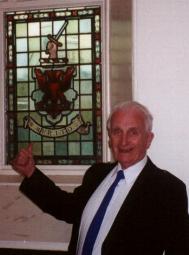 -Sir
John Carson Dunlop, engineer, teacher, medical doctor who lives today near
Dunlop. Sir John is a RAF veteran, a Fellow of the Royal Society of Arts
(Glasgow), Grand Master of the British Guild of Drugless Practitioners, Dean of
the Anglo-American Institute of Drugless Therapy, and Past President of the
Paisley Highlanders. Sir John received his Knighthood from Italy and is an
active member of the Family Society.
-Sir
John Carson Dunlop, engineer, teacher, medical doctor who lives today near
Dunlop. Sir John is a RAF veteran, a Fellow of the Royal Society of Arts
(Glasgow), Grand Master of the British Guild of Drugless Practitioners, Dean of
the Anglo-American Institute of Drugless Therapy, and Past President of the
Paisley Highlanders. Sir John received his Knighthood from Italy and is an
active member of the Family Society.
Frank Dunlop b 1927 Stage director and
administrator, born in Leeds, West Yorkshire, N England, UK. He studied at
University College, London. After founding and directing Piccolo Theatre,
Manchester (1954), he became an associate director of the Bristol Old Vic
(1956), director of Nottingham Playhouse (1961--4), associate director at the
National Theatre (1967--71), and administrator (1968--71). He founded the Young
Vic in 1970, became the company's director (1978, 1980--3), and was director of
the Edinburgh Festival (1983--91).
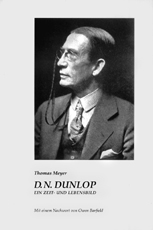 D.N. Dunlop -
Theosophist, Anthroposophist, founder of the World Power Conference, personal
friend of W.B. Yeats - was a true man of our time, combining remarkable
practical capacities in industry and commerce with deep spiritual work and
involvement.
D.N. Dunlop -
Theosophist, Anthroposophist, founder of the World Power Conference, personal
friend of W.B. Yeats - was a true man of our time, combining remarkable
practical capacities in industry and commerce with deep spiritual work and
involvement.
Born in Scotland in 1868, he lost his mother at the age of 5 and was brought up
by his grandfather on the Isle of Arran. Surrounded by Neolithic stone circles
and monoliths on the island, the young Dunlop had a number of profound spiritual
experiences which influenced his later life. With the death of his grandfather,
he struggled for material survival whilst devotedly studying occult literature.
Moving to Dublin, Dunlop mixed in theosophical circles, becoming a friend of W.B.
Yeats and the poet-seer AE, and soon discovered Blavatsky's Secret Doctrine. He
went on to be active within the Irish Theosophical Society, giving numerous
lectures and editing a monthly journal. Alongside his esoteric studies, however,
Dunlop took a leading position in the British electrical industry as a
pioneering organiser, masterminding the first World Power Conference. His life
changed through meeting modern spiritual science, Anthroposophy, and first
founder Rudolf Steiner in 1922. Dunlop recalled later that "the first meeting
brought instant recognition: here is the knower, the Initiate, the bearer of the
Spirit to his age."
His close involvement in the Anthroposophical Movement is thoroughly catalogued
in this comprehensive biography: the famous conferences in Penmaenmawr and
Torquay; the great friendships with figures such as Eleonor Merry, W.J. Stein
and Ita Wegman; Dunlop's position as Chairman of the Society in Britain; and
finally the tragic split and subsequent events in the Anthroposophical Society -
a subject which till now has scarcely been written about - leading up to
Dunlop's premature death in 1935.
Alexander
Dunlop Lindsay, 1st Baron Lindsay of Birker (1879-1952),
was a noted political philosopher and first Principal of the University College
of North Staffordshire which later became Keele University. A student hall of
residence, Lindsay Hall, was named after the founding Principal of the college.
Alexander Dunlop Lindsay was born 14 May 1879 and died 18 Mar 1952. He was
created 1st Baron of the Barony of Lindsay of Birker of Low Ground on 13
November 1945. His son, Michael Francis Morris Lindsay (1909 Feb 24 - 1994 Feb
13), became the 2nd Baron Lindsay of Birker. Michael's son James Francis
Lindsay (b.29 Jan.1945) is the current 3rd Baron Lindsay of Birker. Alexander
Dunlop Lindsay descended from the lineage of the Rev. Thomas M. Lindsay (b.1843)
of Glasgow, Scotland.
of the University College
of North Staffordshire which later became Keele University. A student hall of
residence, Lindsay Hall, was named after the founding Principal of the college.
Alexander Dunlop Lindsay was born 14 May 1879 and died 18 Mar 1952. He was
created 1st Baron of the Barony of Lindsay of Birker of Low Ground on 13
November 1945. His son, Michael Francis Morris Lindsay (1909 Feb 24 - 1994 Feb
13), became the 2nd Baron Lindsay of Birker. Michael's son James Francis
Lindsay (b.29 Jan.1945) is the current 3rd Baron Lindsay of Birker. Alexander
Dunlop Lindsay descended from the lineage of the Rev. Thomas M. Lindsay (b.1843)
of Glasgow, Scotland.
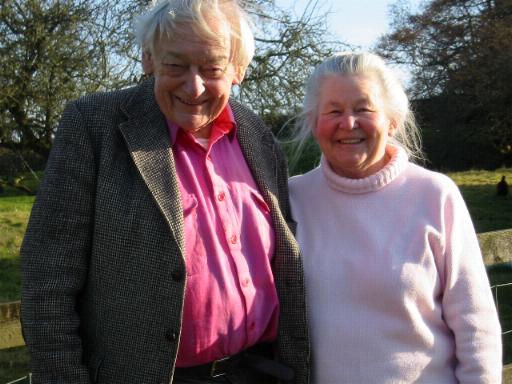 Keith Stuart Wallace Dunlop 29th Dunlop of that Ilk.
(1924-2006) A
great-great-great-grandson of Frances Anna Wallace, Keith is a
direct(17th) descendant of King James II. In his lineage through his
grandfather, Robert, is also William Wallace, The Red Comyn, Edward I of
England, Robert the Bruce, David I of Scotland, William the Conqueror, Egbert
the Saxon, and Emperor of the West, Charlemagne! The source for these
fascinating Claims? Burkes Royal Lineage. His father, Major Arthur Wallace
Dunlop, 27th of that Ilk, 1910-1937 is the second son of Lucy Dowson and Robert
Henry Wallace Dunlop. Arthur was born 1 January 1866 at Lakefield, near
Inverness, Scotland and died 15 February 1937 at Guildford, Surrey, England.
Major Dunlop served with the 23rd Sikh Pioneers. He married Barbara Britton of
New York, USA. They had three sons, Roy, Keith Stuart (b 30 May 1924) and Ian (b
22 March 1929). Roy held the title as 28th of that Ilk until his death in Panama
in 1989.
Keith Stuart Wallace Dunlop 29th Dunlop of that Ilk.
(1924-2006) A
great-great-great-grandson of Frances Anna Wallace, Keith is a
direct(17th) descendant of King James II. In his lineage through his
grandfather, Robert, is also William Wallace, The Red Comyn, Edward I of
England, Robert the Bruce, David I of Scotland, William the Conqueror, Egbert
the Saxon, and Emperor of the West, Charlemagne! The source for these
fascinating Claims? Burkes Royal Lineage. His father, Major Arthur Wallace
Dunlop, 27th of that Ilk, 1910-1937 is the second son of Lucy Dowson and Robert
Henry Wallace Dunlop. Arthur was born 1 January 1866 at Lakefield, near
Inverness, Scotland and died 15 February 1937 at Guildford, Surrey, England.
Major Dunlop served with the 23rd Sikh Pioneers. He married Barbara Britton of
New York, USA. They had three sons, Roy, Keith Stuart (b 30 May 1924) and Ian (b
22 March 1929). Roy held the title as 28th of that Ilk until his death in Panama
in 1989.
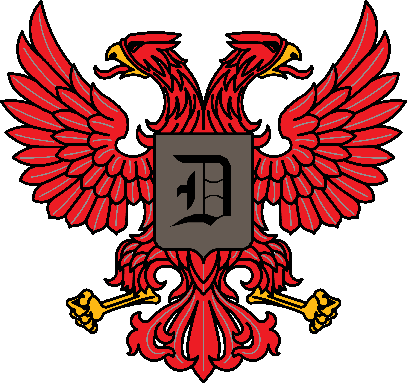



![]()

 arraigned at the bar of the High Court of Judiciary in Edinburgh, accused of
sorcery, witchcraft and incantation, dealing with charms, and abusing the people
with devilish craft of sorcery. She was found guilty and sentenced to be burned
at the stake! Bessie was then burned at Castle Hill at the Witches Well for
being a member of a coven of eight women and four men, and for receiving herbs
from the Queen of the Faeries. (Source: Robbins, Encyclopedia, 455).
arraigned at the bar of the High Court of Judiciary in Edinburgh, accused of
sorcery, witchcraft and incantation, dealing with charms, and abusing the people
with devilish craft of sorcery. She was found guilty and sentenced to be burned
at the stake! Bessie was then burned at Castle Hill at the Witches Well for
being a member of a coven of eight women and four men, and for receiving herbs
from the Queen of the Faeries. (Source: Robbins, Encyclopedia, 455). 
 -Colin
Dunlop, who with his brother Robert, sons of
James Dunlop of Gankirk, were principal owners of the Glasgow based Ship Bank,
established in 1749. The Ship Bank was the first of the Scottish Provincial
banks formed in Glasgow.
-Colin
Dunlop, who with his brother Robert, sons of
James Dunlop of Gankirk, were principal owners of the Glasgow based Ship Bank,
established in 1749. The Ship Bank was the first of the Scottish Provincial
banks formed in Glasgow. 
 -John Dunlop (1 Dec 1755- 4 sept 1820)
A merchant councillor, a popular member of the "Hodge-Podge Club", and a poet of
no mean order , John was the son of the above Colin Dunlop of Carmyle. John was
elected Bailee (1785-88), Lord Dean of Guild(1792-93), and Lord Provost of
Glasgow (1794-95) and afterwards became the Collector of Customs at Port
Glasgow. He also was Director of Stirling's Library. John authored two
well-known songs: "here's to the year that's awa," and "Dinna ask me gin I lo'e
ye," besides other pieces of considerable merit. John was,after the leaving of
Dr Moore, regarded the Poet Laurate of the club...and after the start of the
American Revolution went bankrupt, being the owner of a tobacco house: J.Dunlop&Co.
He published in 1817 and 1818, a collection of his original poems in two volumes
(printed by Donaldson and Macfarlan,Greenock). Sir Walter Scott, a good friend,
was given a copy of these rare books. John was very well regarded in Glasgow,
moving amongst the highest society. John is interred in the High Church of
Glasgow burying Ground. John resided at
-John Dunlop (1 Dec 1755- 4 sept 1820)
A merchant councillor, a popular member of the "Hodge-Podge Club", and a poet of
no mean order , John was the son of the above Colin Dunlop of Carmyle. John was
elected Bailee (1785-88), Lord Dean of Guild(1792-93), and Lord Provost of
Glasgow (1794-95) and afterwards became the Collector of Customs at Port
Glasgow. He also was Director of Stirling's Library. John authored two
well-known songs: "here's to the year that's awa," and "Dinna ask me gin I lo'e
ye," besides other pieces of considerable merit. John was,after the leaving of
Dr Moore, regarded the Poet Laurate of the club...and after the start of the
American Revolution went bankrupt, being the owner of a tobacco house: J.Dunlop&Co.
He published in 1817 and 1818, a collection of his original poems in two volumes
(printed by Donaldson and Macfarlan,Greenock). Sir Walter Scott, a good friend,
was given a copy of these rare books. John was very well regarded in Glasgow,
moving amongst the highest society. John is interred in the High Church of
Glasgow burying Ground. John resided at
 Frances Wallace Dunlop of Dunlop House was
a frequent correspondent of Robert Burns, more than any other. His last writing
was to her 4 days before his death, and the last thing he read was her answer.
Frances Wallace Dunlop of Dunlop House was
a frequent correspondent of Robert Burns, more than any other. His last writing
was to her 4 days before his death, and the last thing he read was her answer.


 being the Clan Macleod, in 1874.
That vessel is today (September 2001) owned by the Sydney Heritage Fleet of
Australia, and is still sailing in great majesty, but as the James Craig, the
name given her in 1905 after being sold to J.J. Craig of New Zealand in 1900 and
entering the
being the Clan Macleod, in 1874.
That vessel is today (September 2001) owned by the Sydney Heritage Fleet of
Australia, and is still sailing in great majesty, but as the James Craig, the
name given her in 1905 after being sold to J.J. Craig of New Zealand in 1900 and
entering the
 trans-Tasman trade in 1901. His son Sir Thomas Dunlop of Glasgow was created a
baronet in 1916. He was Lord Provost and Lord Lieutenant of Glasgow from
1914-1917, and was decorated by several countries. His grandson, Sir Thomas
(1881-1957)(2nd Bt) and GGrandson Sir Thomas (1912-1990)(3rd Bt) carried on in
the shipbuilding business until the early 1980's, according to the company's
centenary publication. (submitted by Geoffrey Winter). Sir Thomas Dunlop (4th
Bt) still lives near Glasgow today, and holds these Arms.
trans-Tasman trade in 1901. His son Sir Thomas Dunlop of Glasgow was created a
baronet in 1916. He was Lord Provost and Lord Lieutenant of Glasgow from
1914-1917, and was decorated by several countries. His grandson, Sir Thomas
(1881-1957)(2nd Bt) and GGrandson Sir Thomas (1912-1990)(3rd Bt) carried on in
the shipbuilding business until the early 1980's, according to the company's
centenary publication. (submitted by Geoffrey Winter). Sir Thomas Dunlop (4th
Bt) still lives near Glasgow today, and holds these Arms. House
Flag of the Dunlop line
House
Flag of the Dunlop line  employed on the British Official History of the Russo-Japanese War, 1910-1913;
awarded the Chesney Gold Medal, 1913; served in World War One, 1914-1918; Deputy
Director of Railway Transport, 1914; Assistant Secretary (Military), Committee
of Imperial Defense and War Cabinet, 1914-1917; Lt Col, 1915; originator of
tanks, 1915-1916; temporary Col, 1915-1917; raised Heavy Section, Machine Gun
Corps, 1916; Brevet Col, 1917; awarded CB, 1917; lecture tour of USA, 1918;
retired 1919; Honorary Maj Gen, 1919; Controller of Information Department of
Civil Aviation, Air Ministry, 1919-1921; Director, Citroen Company, 1922-1951;
created KBE, 1923; Chichele Professor of Military History, Oxford University,
1925-1939; Col Commandant Royal Tank Corps, 1934-1938; died 1951.
employed on the British Official History of the Russo-Japanese War, 1910-1913;
awarded the Chesney Gold Medal, 1913; served in World War One, 1914-1918; Deputy
Director of Railway Transport, 1914; Assistant Secretary (Military), Committee
of Imperial Defense and War Cabinet, 1914-1917; Lt Col, 1915; originator of
tanks, 1915-1916; temporary Col, 1915-1917; raised Heavy Section, Machine Gun
Corps, 1916; Brevet Col, 1917; awarded CB, 1917; lecture tour of USA, 1918;
retired 1919; Honorary Maj Gen, 1919; Controller of Information Department of
Civil Aviation, Air Ministry, 1919-1921; Director, Citroen Company, 1922-1951;
created KBE, 1923; Chichele Professor of Military History, Oxford University,
1925-1939; Col Commandant Royal Tank Corps, 1934-1938; died 1951. D.N. Dunlop -
Theosophist, Anthroposophist, founder of the World Power Conference, personal
friend of W.B. Yeats - was a true man of our time, combining remarkable
practical capacities in industry and commerce with deep spiritual work and
involvement.
D.N. Dunlop -
Theosophist, Anthroposophist, founder of the World Power Conference, personal
friend of W.B. Yeats - was a true man of our time, combining remarkable
practical capacities in industry and commerce with deep spiritual work and
involvement. of the University College
of North Staffordshire which later became Keele University. A student hall of
residence, Lindsay Hall, was named after the founding Principal of the college.
of the University College
of North Staffordshire which later became Keele University. A student hall of
residence, Lindsay Hall, was named after the founding Principal of the college. 
